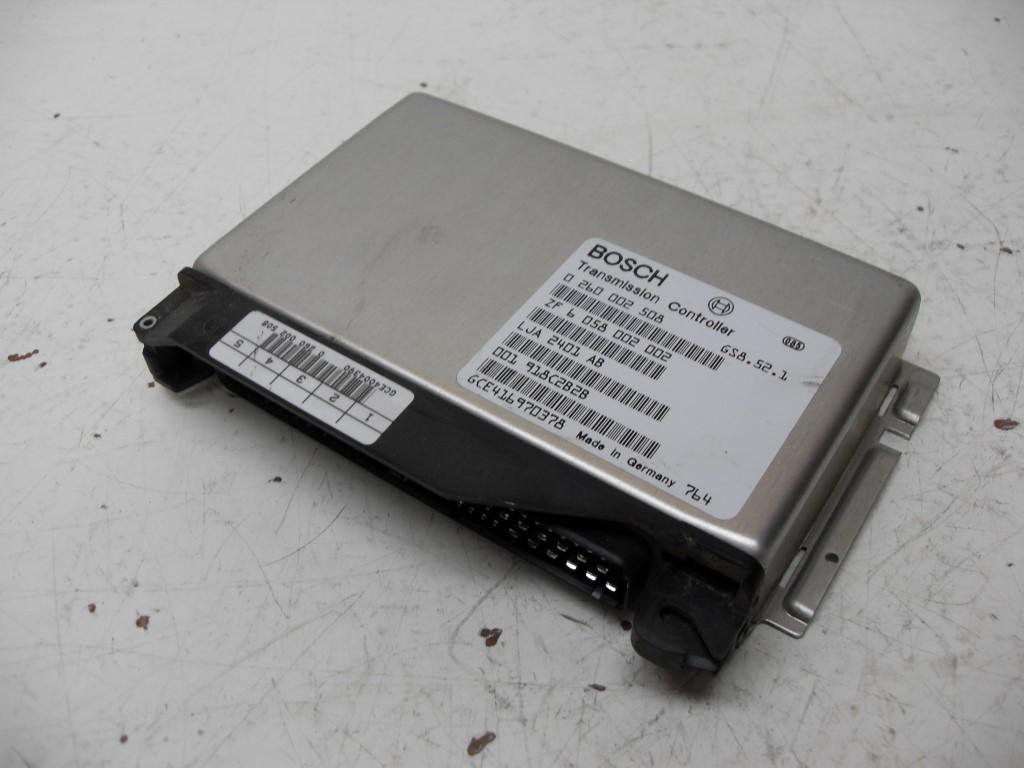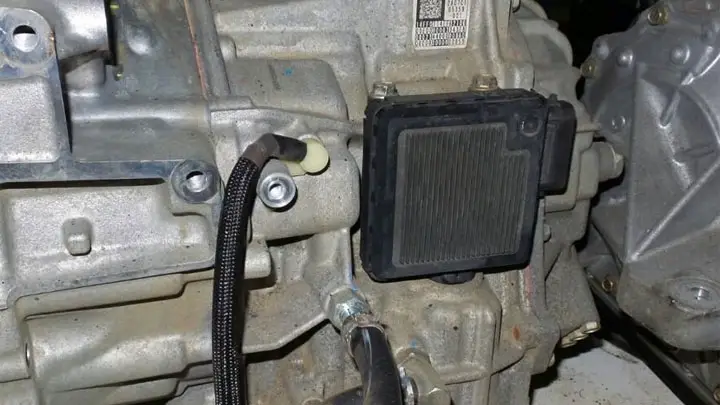When a transmission control module (TCM) goes bad, it can cause a variety of problems with the vehicle. The TCM controls shift points and shift solenoids which in turn affect how hard or soft the shifts are. Without the correct signals being sent, shifting can become erratic and jerky.
A bad TCM may also result in delayed gear engagement when accelerating or decelerating. It’s also possible that you won’t be able to get your car out of park without pressing on the brake pedal. In some cases, diagnosing a bad TCM requires specialized tools such as an oscilloscope to review waveforms from various sensors around the transmission and engine systems.
There is no rebuild option for most modern day transmissions; instead, if diagnosis reveals it needs replaced then you will need to purchase either a new or remanufactured part depending on availability and warranty requirements.
A bad Transmission Control Module (TCM) can have a variety of symptoms, ranging from transmission shifting issues to complete failure. If your vehicle is having difficulty changing gears or the engine light comes on, it could be a sign that the TCM has gone bad and needs to be replaced. In addition, you may experience decreased fuel economy, jerking while accelerating or decelerating, and stalling.
It’s important to get your car inspected by an experienced mechanic as soon as possible in order to identify and repair any potential problems with the TCM before they become more serious and costly.
BAD TRANSMISSION CONTROL MODULE (TCM) ?? HERE ARE THE SIGNS
How to Test Transmission Control Module
Testing the transmission control module should be done by a professional mechanic as it requires specialized diagnostic tools. The technician will connect an OBD-II scanner to the vehicle’s computer and read any codes that are stored in the transmission control module. If there are errors, they can then use specific tests or replace components to try and fix them.
In some cases, if a faulty transmission control module is identified, it may need to be replaced entirely.
What Does Resetting Transmission Control Module Do
Resetting the Transmission Control Module (TCM) can help restore proper communication between the vehicle’s computer and transmission, which in turn can improve shifting performance. The reset procedure also clears any stored fault codes, allowing for a fresh start without having to replace any parts. While this method is not a guaranteed fix for all issues related to the TCM or transmission, it is an important part of troubleshooting these systems and should be done before more drastic measures are taken.
Transmission Control Module Reset
Transmission Control Module (TCM) reset is a process used to reset the electronic controls of your vehicle’s transmission. This can be done by disconnecting the battery, removing and reinstalling the fuse for the TCM, or using a scan tool that has specific TCM programming capabilities. Resetting the TCM helps clear out any stored transmission-related trouble codes and data, which can help restore normal shifting performance if it has been affected by an electrical or mechanical issue.
How Do You Fix a Transmission Control Module
If you find yourself in need of transmission control module repair, the first step is to diagnose what type of failure has occurred. To do this, a mechanic will use an OBD-II scanner and access your vehicle’s computer system to determine whether there is an issue with the wiring or if the actual module itself has failed. If it’s determined that a new part needs to be installed, then the old unit must be removed and replaced with a compatible one.
It’s important to remember that most transmission control modules are extremely sensitive components and should only be serviced by qualified professionals due to their complexity.

Credit: carfromjapan.com
How Do I Know If My Transmission Control Module is Bad?
Knowing if your transmission control module (TCM) is bad can be difficult to determine without the right diagnostic tools and knowledge. The TCM’s job is to monitor and adjust the shift points of a vehicle’s automatic transmission in order for it to function properly, so when it fails or malfunctions, you may notice some unusual behavior from your car. Common signs that point towards a faulty TCM include poor acceleration, delayed shifting between gears, and sudden jerks or surges while driving.
In addition to these symptoms, check engine lights on the dashboard can indicate issues with the TCM as well. If you suspect that your TCM is bad then it’s best to take your vehicle into an experienced mechanic who has access to proper diagnostic equipment in order to accurately diagnose any potential problems with your car’s transmission system.
What Happens If You Drive With a Bad Transmission Control Module?
If you drive a car with a bad transmission control module, the consequences can be catastrophic. The transmission control module (TCM) is responsible for controlling your vehicle’s shifting pattern and timing. If it malfunctions, it could cause your car to shift gears erratically or not at all, resulting in decreased fuel economy, increased engine wear and tear, as well as an inability to accelerate properly.
It could also result in unexpected shifts into neutral or reverse when driving forward – which can be extremely dangerous if you’re on the highway! Additionally, if the TCM fails completely it will cut off power from your engine and leave you stranded on the side of the road until repairs are made. To avoid these risks altogether it’s best to get any issues with your TCM diagnosed and fixed as soon as possible by a qualified mechanic.
How Do I Reset My Transmission Control Module?
Resetting your transmission control module is an important step to take if you are experiencing issues with the performance of your vehicle. The process involves disconnecting the battery, replacing any faulty parts, and then resetting the TCM using a diagnostic scanner or manually. First, it is important to start by disconnecting the battery cables from both terminals and waiting for at least five minutes before reconnecting them.
This will allow time for all systems in the car to completely shut down in order to not cause any further damage. Once that’s done, check for any worn out parts such as valves and solenoids that may need replacement. Next, connect a diagnostic scanner or code reader into the OBDII port underneath the dash of your car and follow on-screen instructions according to what type of device you have used.
Depending on how far along you are with this process, some scanners may even require extra steps such as reprogramming certain parameters like shift points or torque converter lockup settings depending on make and model specific requirements. Finally once everything has been set up correctly run through each test cycle until all codes have cleared out successfully indicating that you have now successfully reset your transmission control module!
Will a Bad Transmission Control Module Throw a Code?
Answering the question of whether or not a bad transmission control module can throw a code, the answer is yes. In most cases, when a vehicle’s transmission control module (TCM) malfunctions or fails for any number of reasons, it will send out an error code that alerts the car’s onboard computer and triggers the check engine light in your dashboard. This code signals to mechanics that there is a problem with the TCM and needs further investigation.
Depending on the make and model of your car, this code may be accompanied by other symptoms such as hard shifting gears or erratic behavior from your vehicle. It’s important to note that not all TCMs are designed to produce codes when they malfunction; some only provide input data and do not output diagnostic information at all so if you suspect yours has gone bad you should have it examined right away before more serious damage occurs.
Conclusion
In conclusion, a bad transmission control module can be very detrimental to your vehicle and should not be ignored if you suspect something is wrong. If you notice any signs of failure in the TCM, it’s important that you get it checked out by a professional as soon as possible. Taking care of the issue promptly will help ensure that your vehicle runs smoothly and efficiently for many years to come.


